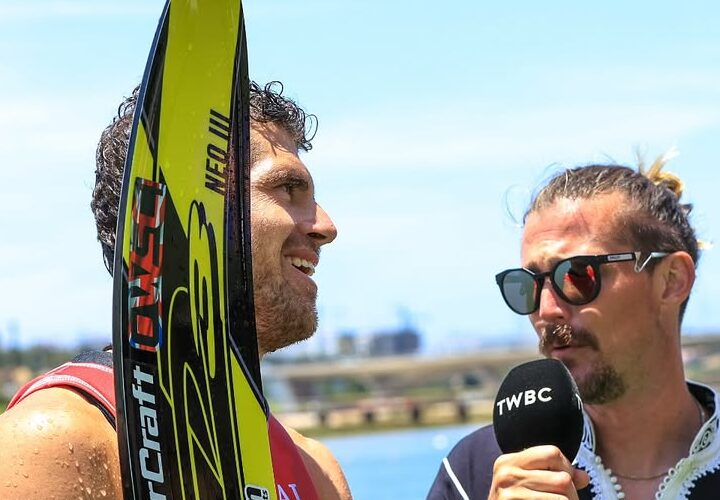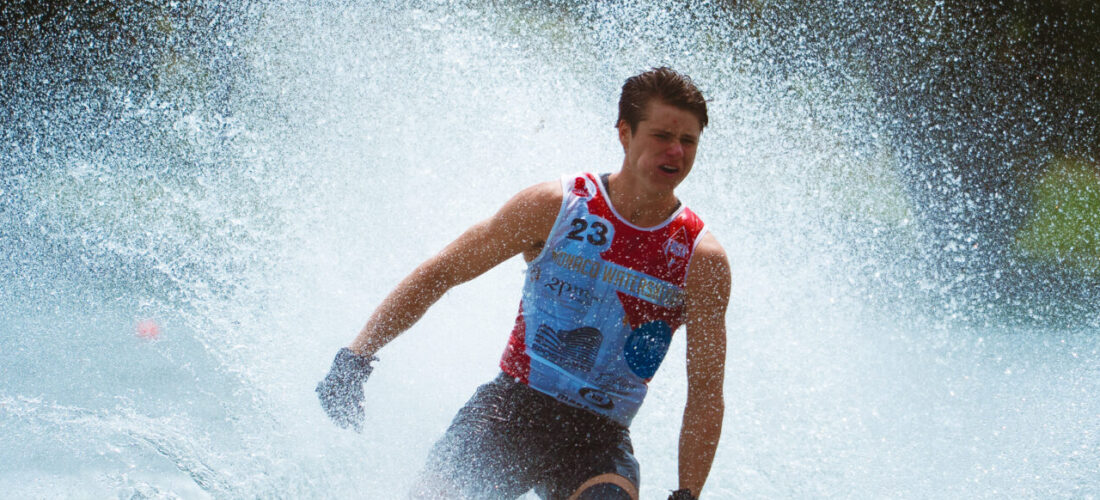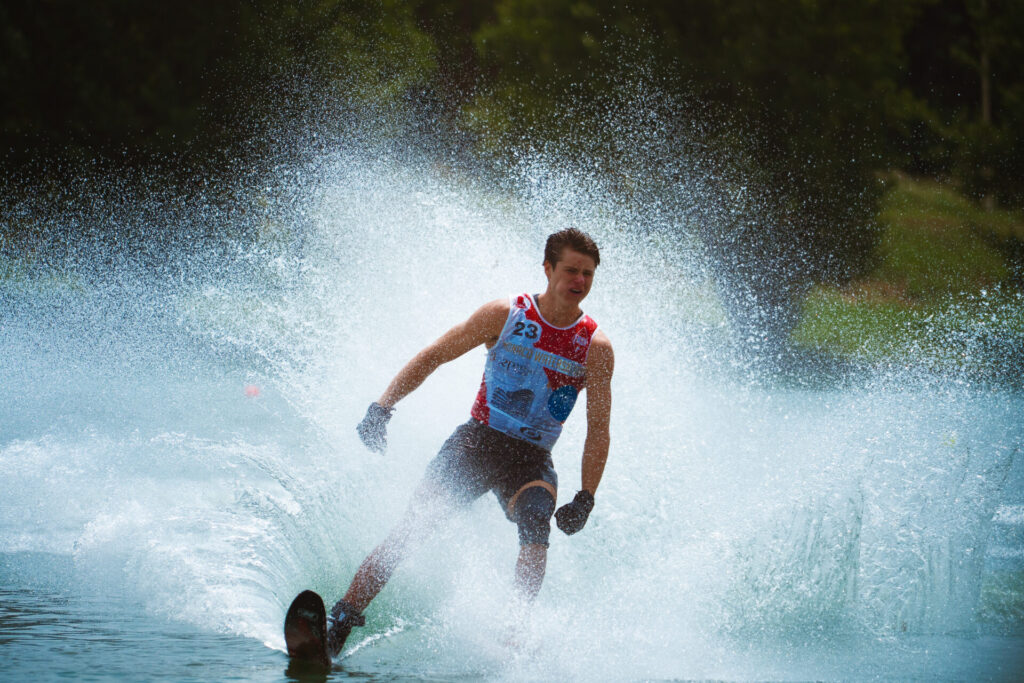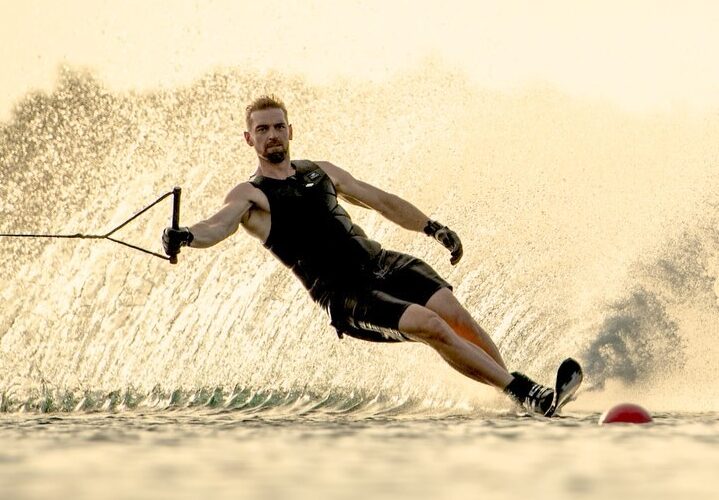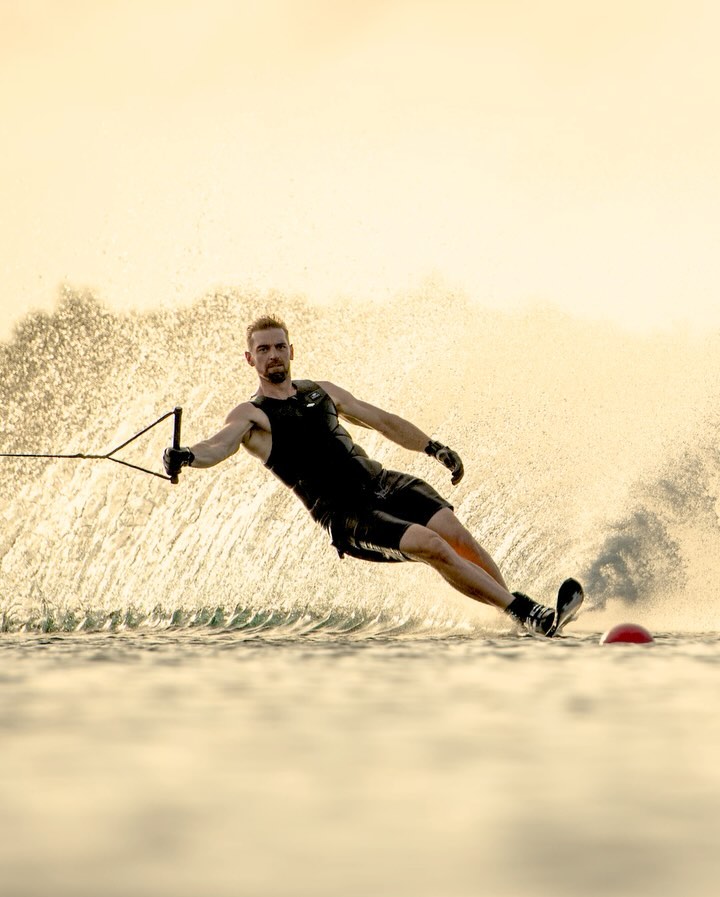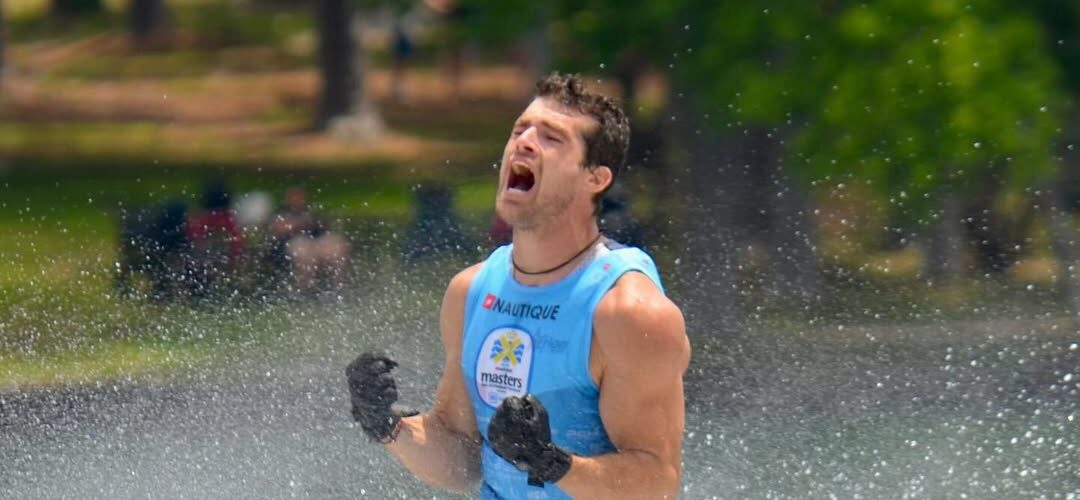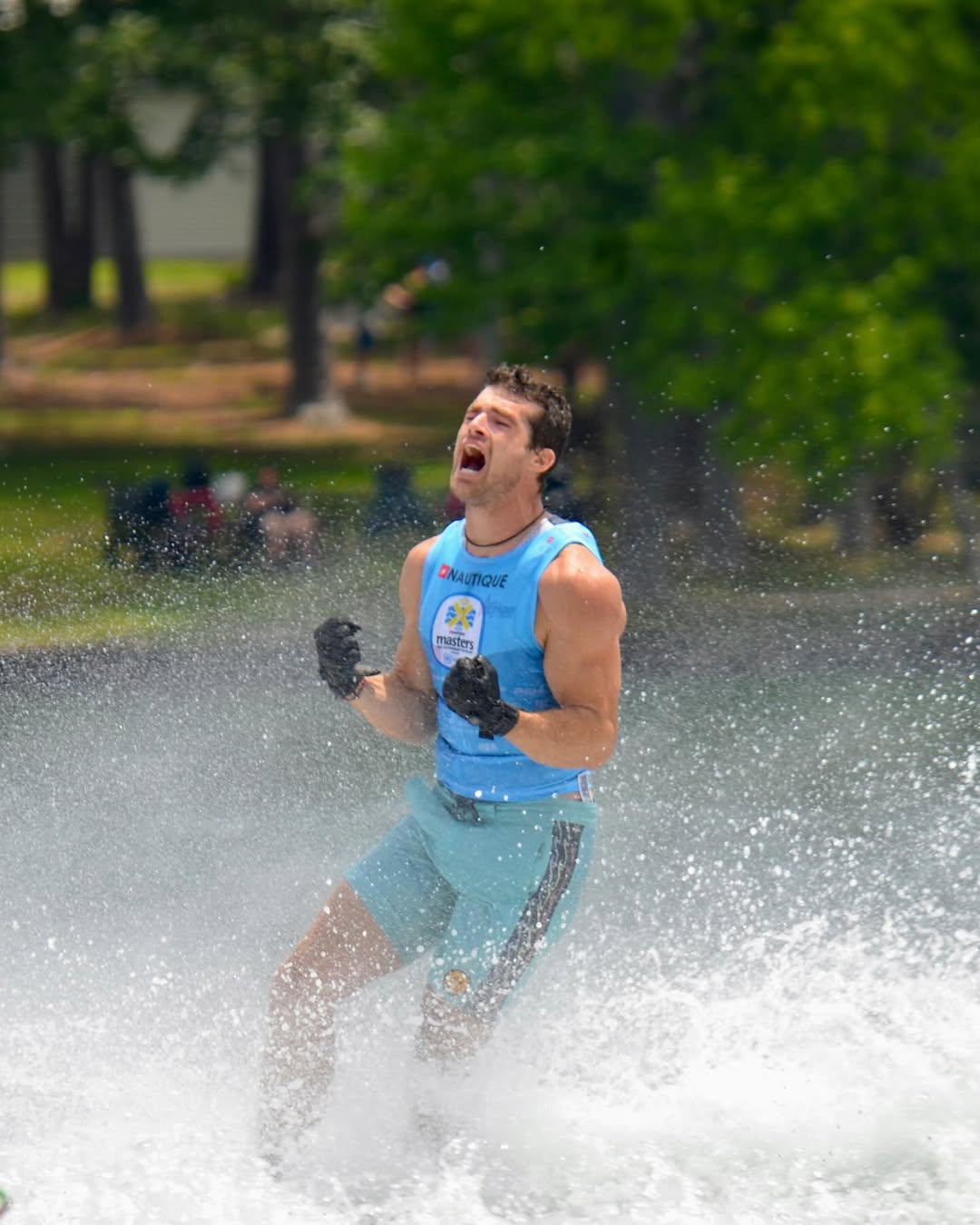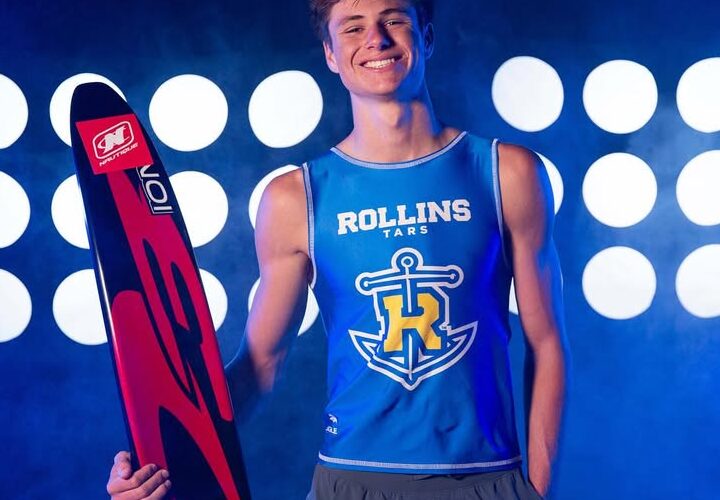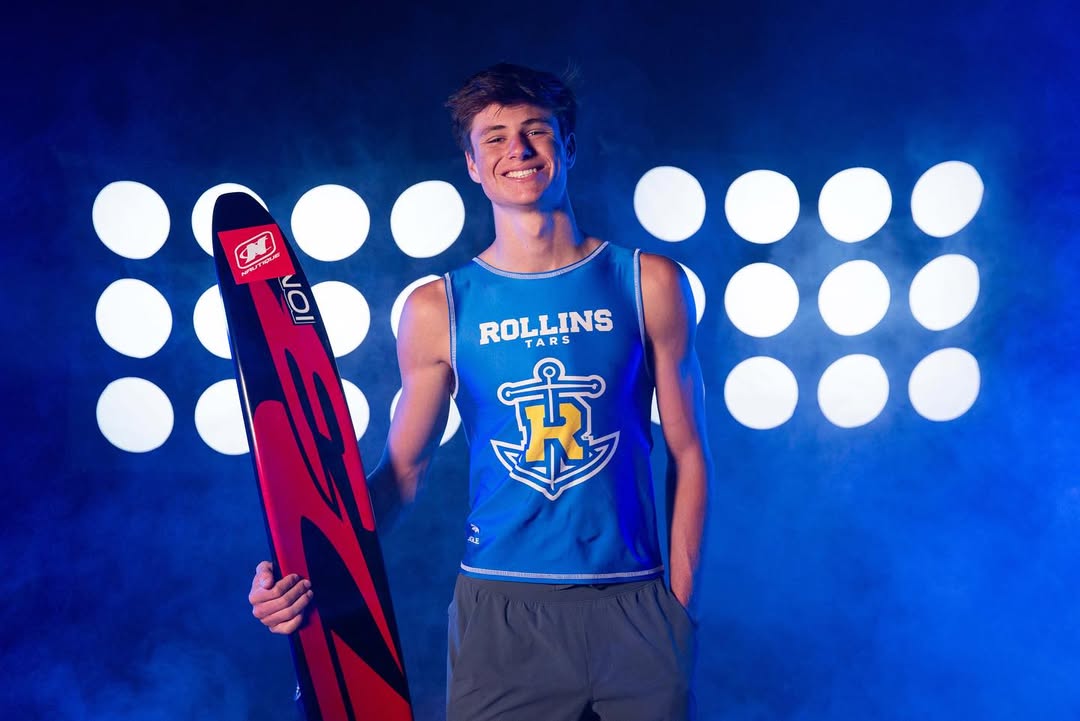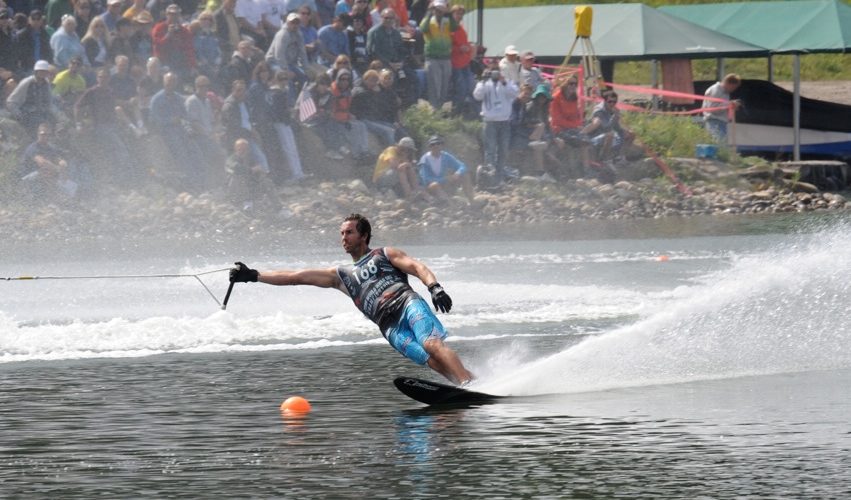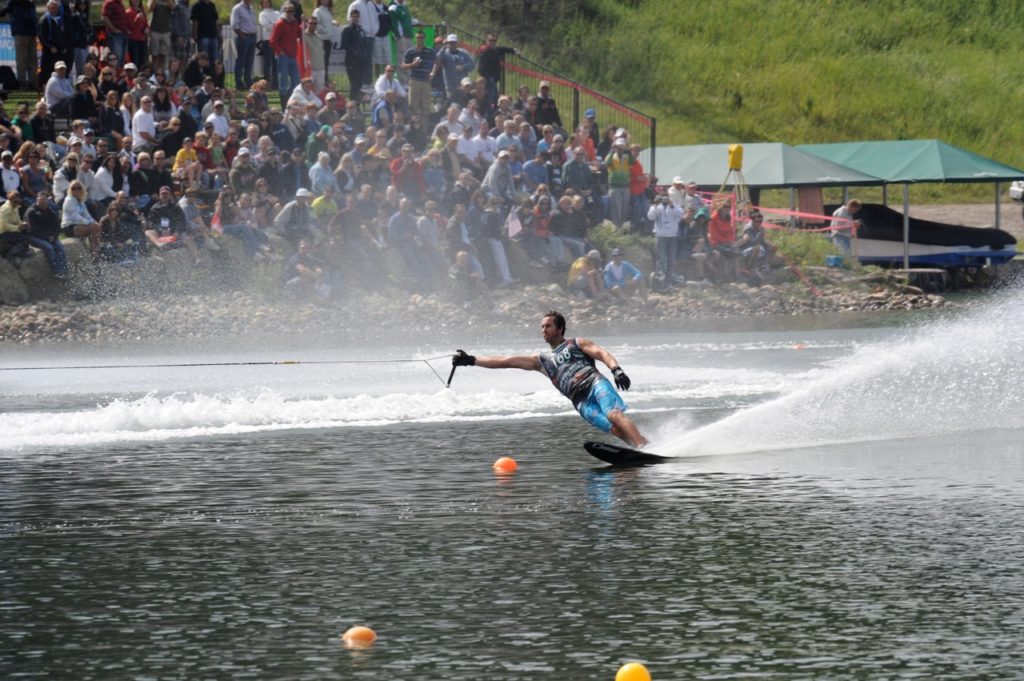2025 Portugal Pro Waterski

Image: @vasco__trindade
In a season full of firsts, the Waterski Pro Tour included a stop in Tomar, Portugal, just outside of Lisbon. The beautiful Portuguese countryside has never seen action like this before. Even the local mayor made an appearance, just to see it with their own eyes. There is one other thing that made this tournament extra unique: the slalom portion of the event only included women.
Yes, you heard that right. For the first time in Waterski Pro Tour history, the women athletes got the whole show to themselves. They certainly didn’t underdeliver on the action. 7 of the best female skiers in the world fought it out for the title in fairly challenging conditions. Abnormally high water levels and a wide open lake subjected the skiers to unexpected rollers and sudden gusts of wind. That didn’t seem to affect the scores, however. Neilly Ross continued to prove her slalom skills with a tied personal best (and new season best) of 3 at 10.75m to tie with Manon Costard in the finals. What’s even more impressive is that Neilly scored 2 in the previous qualifying round to vault herself ahead of Manon in seeding.
The penultimate athlete in finals was Allie Nicholson, who put out an extremely impressive score in qualifying. Allie took a risk in finals, aiming for a headwind on 10.75m, but unfortunately the risk didn’t pay off when she took an early fall at 11.25m. Last but not least, Jaimee Bull took to the water. Jaimee was the only skier to run 10.75m in qualifying and secured the highest score of the event. Now all eyes were on her as she made an attempt to match that score again in finals. Jaimee certainly didn’t disappoint when she made her 11.25m pass look like an opener before cruising around 5 at 10.75m to secure the title.
The excitement wasn’t exclusive to slalom, however. Some of the most talented trick skiers also joined the event. This year marks a big push for the trick discipline with events spanning across three continents. The world’s best are certainly seizing the opportunity. This time around 8 athletes, originating from 7 different countries, threw their hat in the ring for the Portugal Pro title.
Starting off with the women, Neilly Ross continued her dominance this weekend with an attempt at the world record. She just narrowly missed the time limit after a small bobble following her second flip sequence. Despite the significant point deduction, she still managed to claim top seed heading into finals. Brooke Baldwin and Kirsi Wolfisberg followed close behind in 2nd and 3rd place. As finals kicked off, the seeding was looking to hold true for placement. Neilly opted for an alternate run in finals, which didn’t quite score as high. However, it was still enough to position herself ahead of Brooke.
There were no men slalom skiers but there were some trick skiers. The suspense started building as early as the first qualifying round when Danylo Filchenko snapped his rope on his first toe trick. Additionally, Tue Neilsen had some of his high scoring toe tricks cut after intensive review from the judges panel. Just to top things off, Matias Gonzalez fell relatively early in his toe pass and fell short of his typical score range. The qualifying rounds surely shook up the seeding as we headed towards finals. However, we saw the highest scores of the weekend in finals when the pressure was on. Danylo managed two stand up passes and took the lead with only two skiers remaining. He was quickly overthrown by Pato Font, who became the first skier in finals to clear the 12k point barrier. Matias was the final athlete to ski.
The whole crowd went silent as Mati stood up both passes. It couldn’t get any closer! The suspense was building as the judges worked frantically to calculate the score. After what felt like forever, the final score came through the radio: 12,490! Matias slipped into first place over Pato by only 250 points.
All in all, it was an extremely successful event! In addition to the amazing skiing, the host town of Tomar was extremely beautiful and provided tons of historic scenery, flavorful food, and welcoming people. A massive thank you to The Waterski Academy, the city of Tomar, and all the other sponsors that made this event possible.


